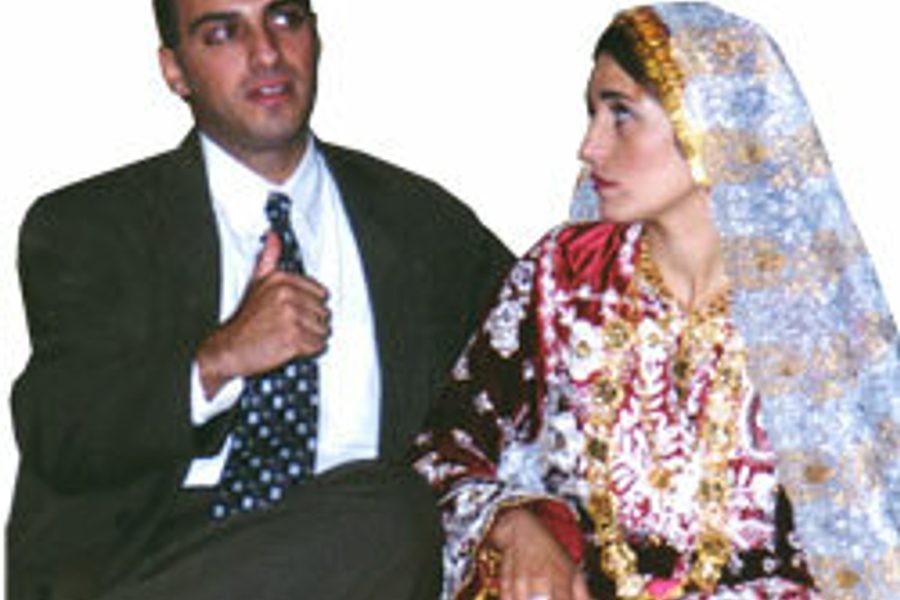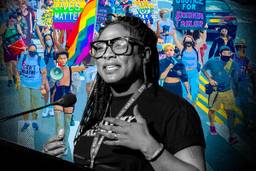
When Naima married Hatem, she expected to leave the tragic past behind in East Jerusalem. She never thought her Chicago husband would become an activist like her brother — the one who paid with his life.
José has the chance of a lifetime, recruited by the Dodgers. But as we watch him kiss his third girlfriend goodbye in the Dominican Republic, we already know that he’s got more on his mind than baseball.
At home, Barine worries that her twin teenage girls are in danger of losing their Nigerian heritage. On the school bus, though, Nina and Zina chafe under the teasing and finger-pointing about their foreign accents and clothes.
The New Americans, an extraordinary new TV mini-series, lets us in on these stories and several more besides. Executive produced by Steve James, Gordon Quinn and Peter Gilbert of Kartemquin Films (the company that made Hoop Dreams) and directed by seven award-winning directors, the series captures viewers and spins tales that are all the more engrossing because they’re true. It debuts on the PBS series Independent Lens—a series that one critic aptly called the TV version of an independent bookstore — on March 29, 30 and 31.
The series is masterfully executed. Kartemquin has been an incubator for dozens of artists and projects over the years—Hoop Dreams, Refrigerator Mothers, Stevie and Golub among them. It was founded in the ’60s by Quinn and others to tell real people’s stories, in ways that could change American society. Kartemquin filmmakers cultivate enormous patience, following subjects over long periods (in the case of Hoop Dreams, some six years). Their work is imbued with profound respect for both the subject and the viewer. The filmmakers win the trust of their subjects, capturing remarkable moments of intimacy and self-revelation. The finished work also features powerful storytelling skills and elegant editing. So the viewers get lived experience, inside the same envelope of trust that bonds maker and subject.
The New Americans takes us inside lives that are very easy to miss altogether: those of the 56 million first-generation Americans. You may know that behind the stolid face of the busboy, foodworker and hotel maid there’s a story. In The New Americans, you find it out. Chef’s assistant Barine, the sister of slain Nigerian human rights activist Ken Saro-Wiwa, used to own a catering business herself. Kansas meatpacker Pedro Flores has six children and a wife in Mexico and a dream — one it will be harder than he can imagine to fulfill — to reunite his family. Silicon Valley computer worker Anjan Bacchu is torn between his Gandhian father’s ardent wish for him to return to India and the hope of work in the wreckage of the dot.com era.
Because the mini-series launches each of their stories in their home countries, we meet these people before they become immigrants, before they lose the social skin of their own culture. We see the mourning for what’s lost that suffuses their entry, a grief almost invisible to those efficiently trying to help them adapt to the new. And we want to know what happens, because these aren’t living exemplars of issues but people who bring all their skills and problems to surviving the destruction of former lives and the piecing together of new ones. Sometimes you want to reach into the TV and stop them from making the choices they do (like I did when the Flores family moved). Sometimes you feel like joining the celebration (like I did when Ngozi got her nursing assistant’s certificate).
Public television execs saw the power of these stories early on —the Independent Television Service funded it, after initial funding from the John D. and Catherine T. MacArthur Foundation. Public TV Web sites now make it possible for viewers like us to make The New Americans a topic for a book club-like session and to share recipes and our own stories (at pbs.org/newamericans). ITVS’s outreach Web site (itvs.org/outreach/newamericans) gets deeper, into short versions of the series for discussion, teachers’ guides and lesson plans, including materials for teachers of English for Speakers of Other Languages (ESOL). It even lets you find out who has already organized an event in your state just by clicking on a map.
The New Americans has become more than a mini-series. It’s a great example of the power of storytelling to spur insights, to bring people together, and to make change. It’s the kind of programming that saves the reputation of public TV.

I hope you found this article important. Before you leave, I want to ask you to consider supporting our work with a donation. In These Times needs readers like you to help sustain our mission. We don’t depend on—or want—corporate advertising or deep-pocketed billionaires to fund our journalism. We’re supported by you, the reader, so we can focus on covering the issues that matter most to the progressive movement without fear or compromise.
Our work isn’t hidden behind a paywall because of people like you who support our journalism. We want to keep it that way. If you value the work we do and the movements we cover, please consider donating to In These Times.








